
Polar bear_U maritimus_Alaska_fat bear on shore_E V Regehr.JPG
Ursus maritimus
As indicated by its scientific name, this species is a sea bear. [See separate page: Discovering and Naming Bear Species for Science.] It is considered a true marine mammal (along with seals, walruses, dolphins, whales, and sea otters), and thus falls under marine mammal international treaties and most national regulations. In Canada, though, polar bears are considered terrestrial mammals and largely governed under varying provincial and territorial legislation.
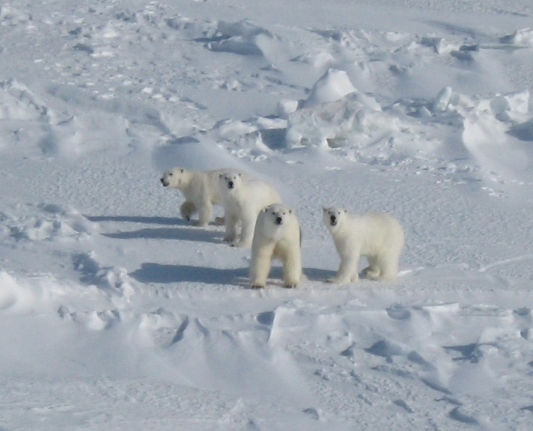
Polar bear_U maritimus_Alaska_adult female with three yearlings_E V Regehr
This species is the only marine mammal that spends little time swimming and lives almost entirely on the surface of the sea ice, which is crucial for its survival. Polar bears use ice as a necessary platform to hunt seals (mainly ringed seals and bearded seals), their primary prey. They are, by far, the most carnivorous bear, consuming almost no plant foods — they are at the far end of the spectrum from the entirely herbivorous giant panda.
Polar bears have evolved specific adaptations for hunting seals, most notably a white-colored coat (actually made up of hollow translucent hairs that appear white) that enables them to stalk seals resting on the surface or popping up through a breathing hole. The underside of their feet is hairy, for walking on ice.
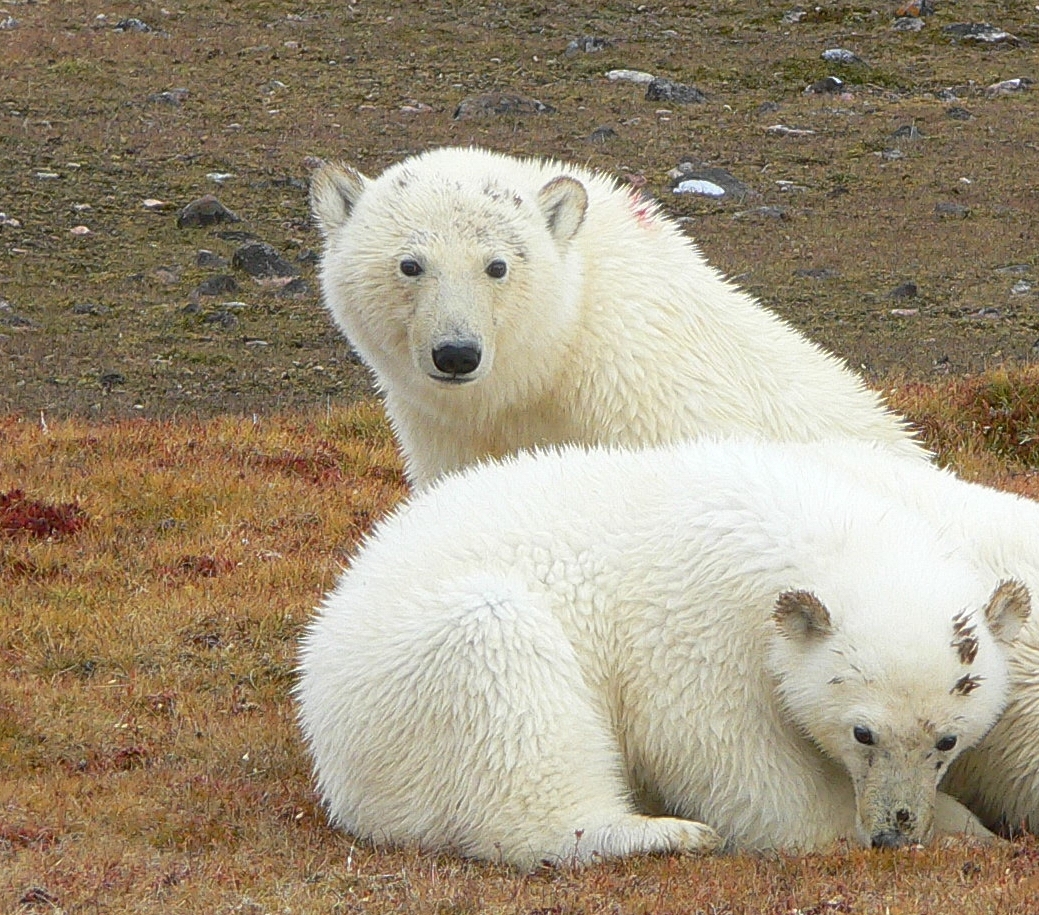
Polar bear_U maritimus_Nunavut Canada_yearlings_D Garshelis

Polar bear_U maritimus_Nunavut Canada_closeup face and fur_D Garshelis
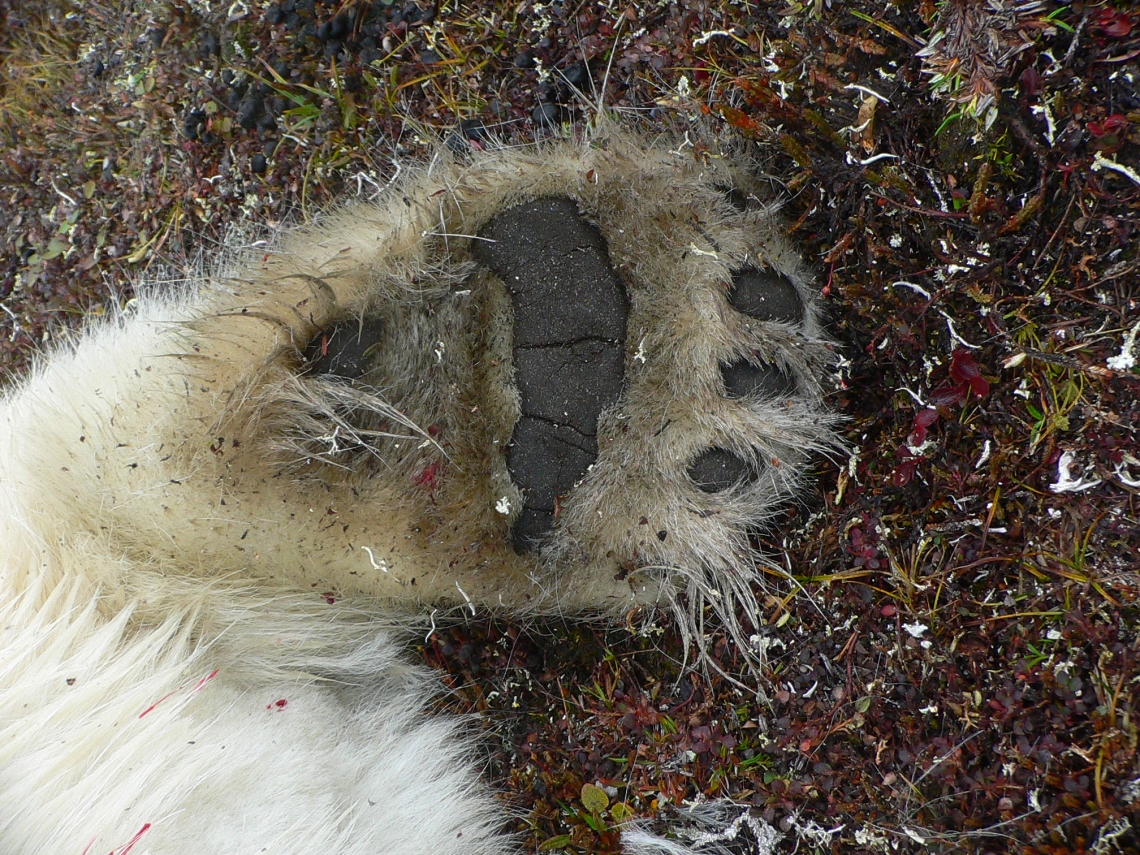
Polar bear_U maritimus_Nunavut Canada_underside hindfoot_D Garshelis
Polar bears are the most recently evolved species of bear, stemming from brown bears. On average, polar bears are larger than brown bears, but brown bears are far more variable in size, with some individuals larger than polar bears. As brown bears expand northward with climate change, they occasionally interbreed with polar bears (hybrids called grolars are offspring of male grizzlies and female polar bears; pizzlies, less common, are the reverse).
Like brown bears, pregnant polar bears enter maternity dens in fall and give birth during winter hibernation. Conversely, all other polar bears are active during winter because they continue to feed on seals. In summer, sea ice melts unevenly across the Arctic. In some populations, the ice disappears entirely, forcing polar bears to live onshore for 3 months or more. During that time, they mainly fast, occasionally scavenging on dead seals or whales onshore. In some of these populations, polar bears have faced this situation throughout their evolutionary history; however, the duration of the open water season is increasing due to climate change, causing a steeper seasonal decline in body weight. Most notably, pregnant females in populations with ice-free seasons must pass directly from summer-fall fasting to fall-winter denning, going as much as 10 months without nourishment (one of the most extraordinary fasts of any mammal).
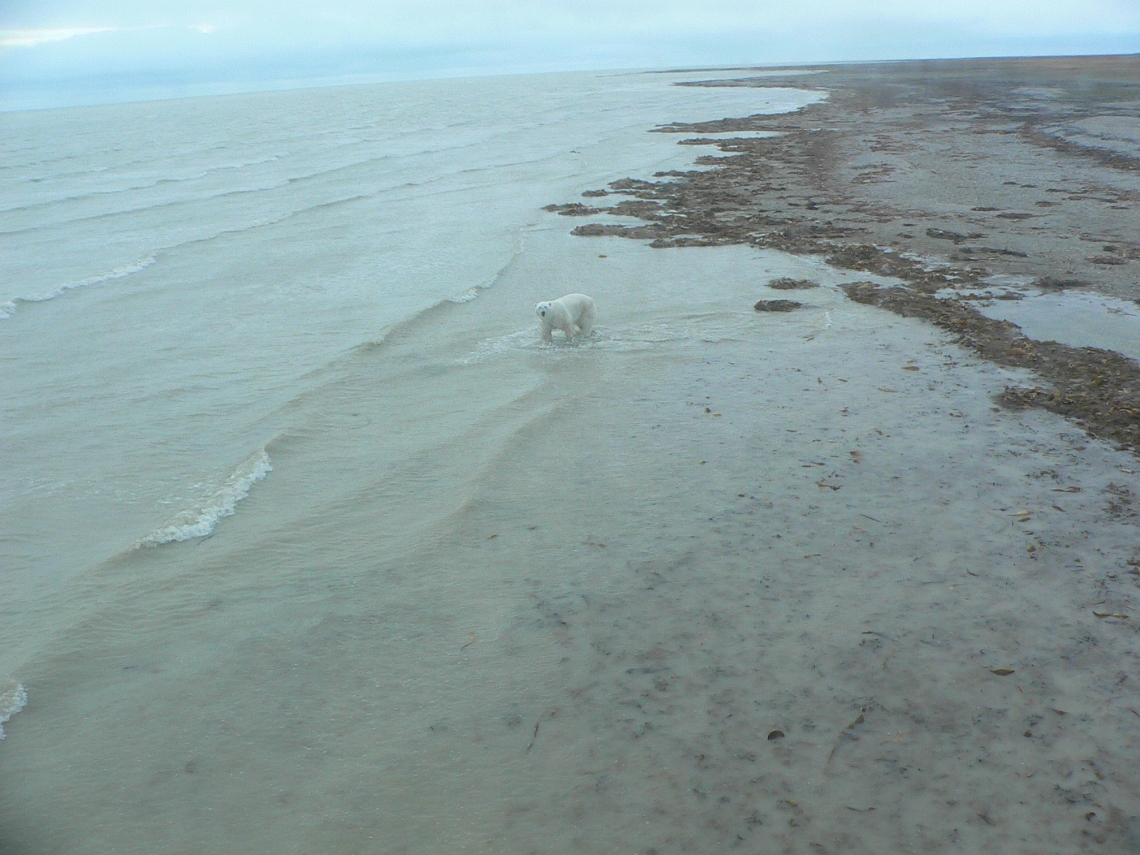
Polar bear_U maritimus_Foxe Basin Canada_stranded onshore during ice free season_D Garshelis
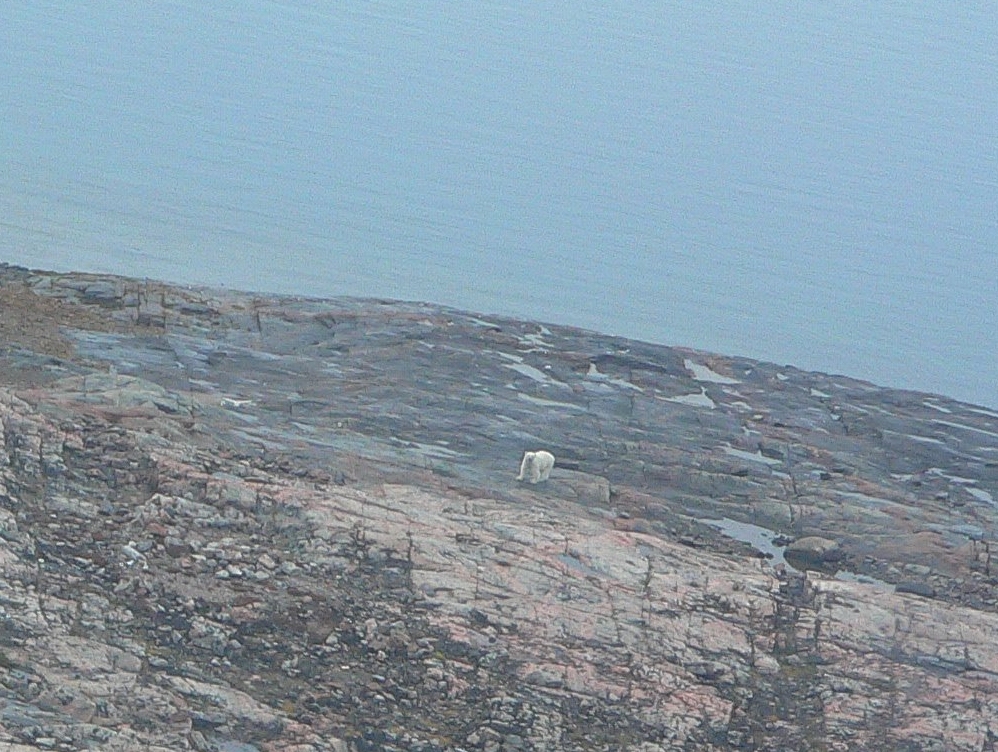
Polar bear_U maritimus_Nunavut Canada_fasting during ice free season_D Garshelis
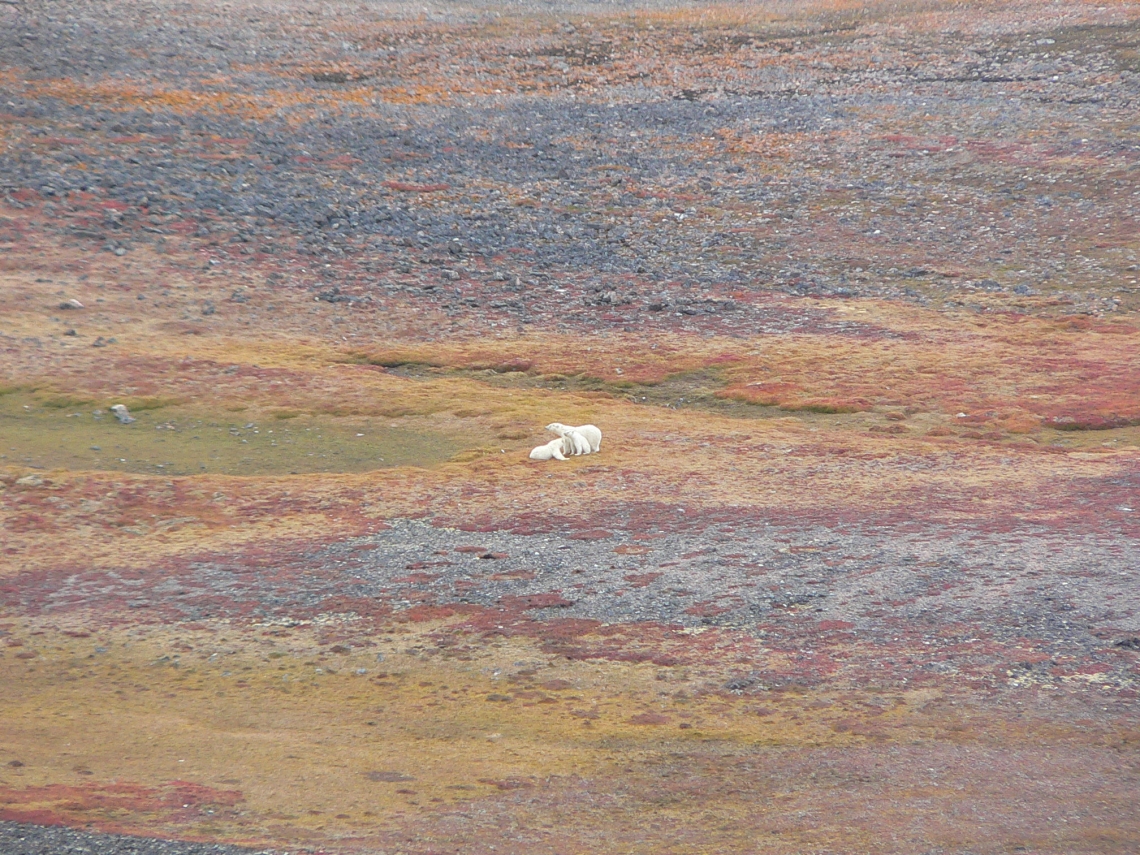
Polar bear_U maritimus_Nunavut Canada_family group inland_D Garshelis
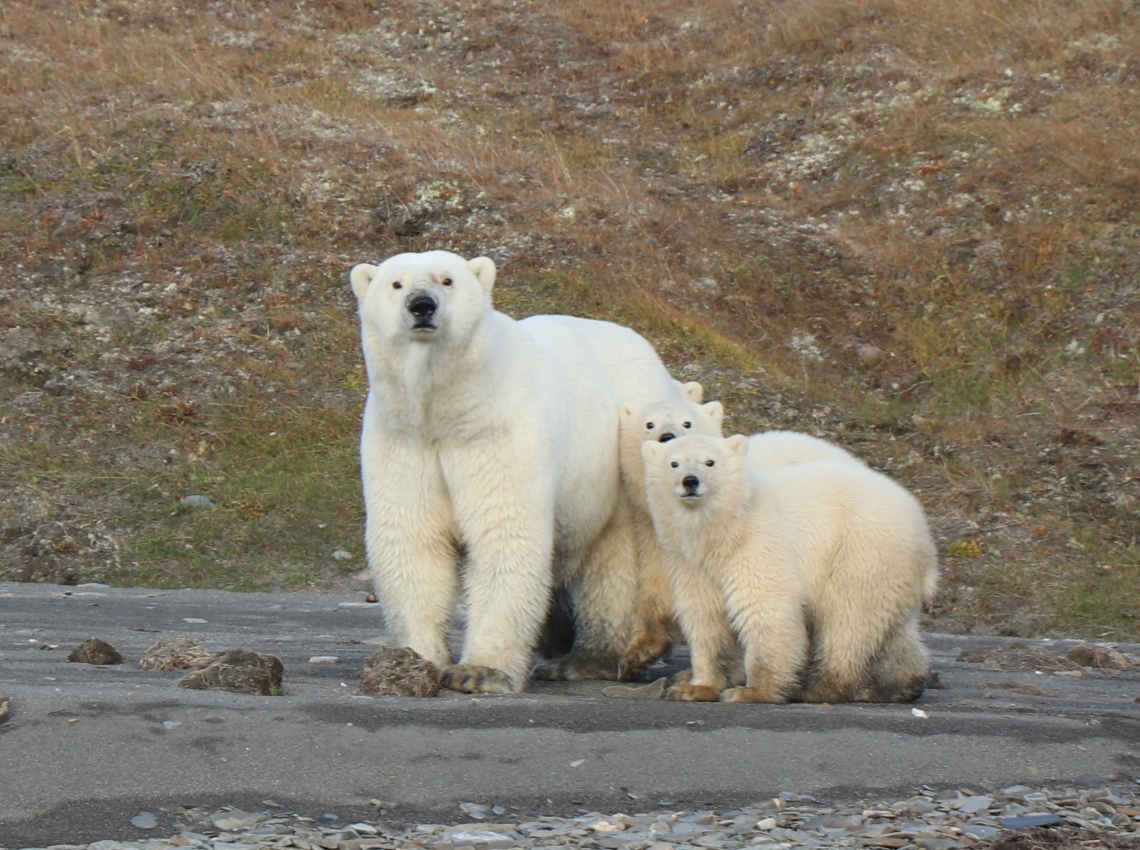
Polar bear_U maritimus_Alaska_female with cubs on shore_E V Regehr
The world population of polar bears has been estimated at about 26,000. They are found across the circumpolar Arctic, occurring in Canada, United States (Alaska), Greenland (Denmark), Norway (Svalbard), and Russia. Hence, these countries jointly manage the conservation of this species. There are 19 defined subpopulations, which are managed and monitored as separate units, although some bears move between them. There are no recognized subspecies.
This species is Vulnerable on the IUCN Red List due to projected population declines from loss of sea ice resulting from climate change. Scientists have invested a good deal of effort studying this species, motivated by this increasing threat. So far, there is no indication of a shift in diet as an adaptation to the declining sea ice. Models of sea ice decline indicate a high probability that the global polar bear population will decline by more than 30% over the next 35 years (3 generations). Details can be found on the IUCN Red List account of this species.

This species is not under the purview of the Bear Specialist Group, so the account on this website is less detailed than that of the other 7 bears. The species is overseen by the IUCN SSC Polar Bear Specialist Group, whose members represent the 5 range countries. Other information about this species can be found on the website of Polar Bears International (not affiliated with IUCN).
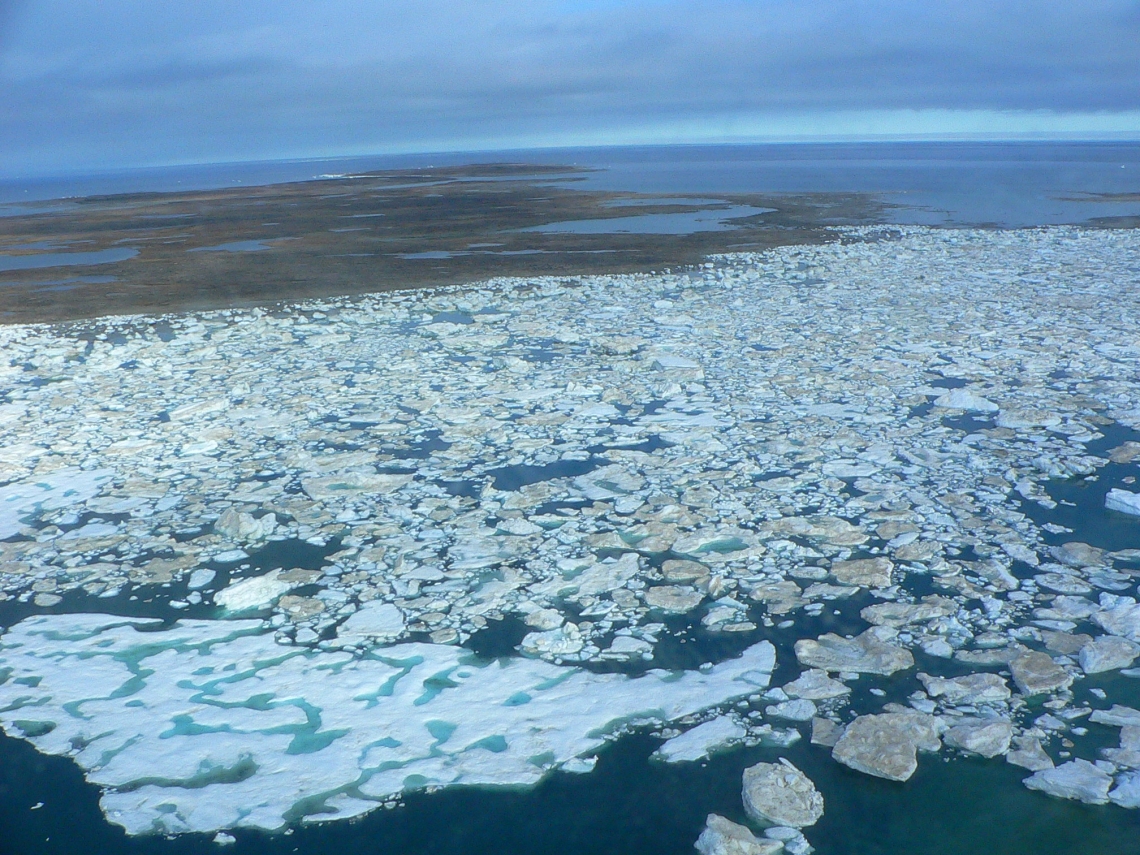
Polar bear_U maritmus_Foxe Basin Canada_ice breaking up summer_D Garshelis
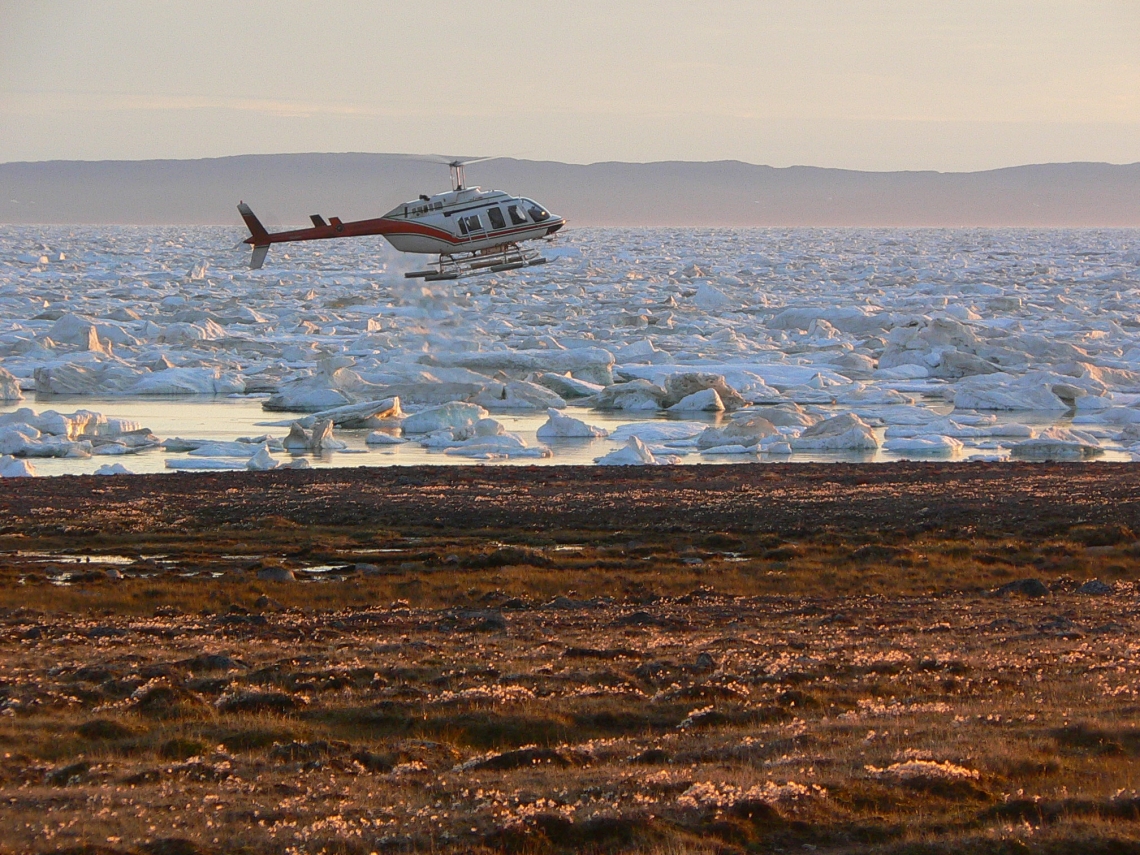
Polar bear_U maritimus_Nunavut Canada_research conducted with helicopter_D Garshelis